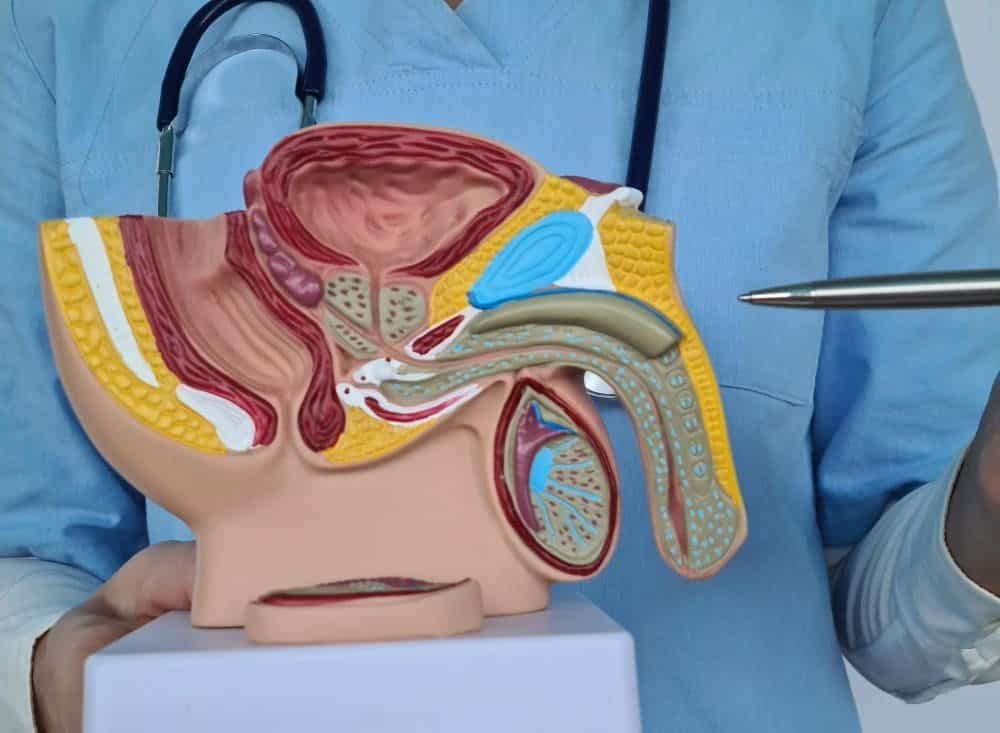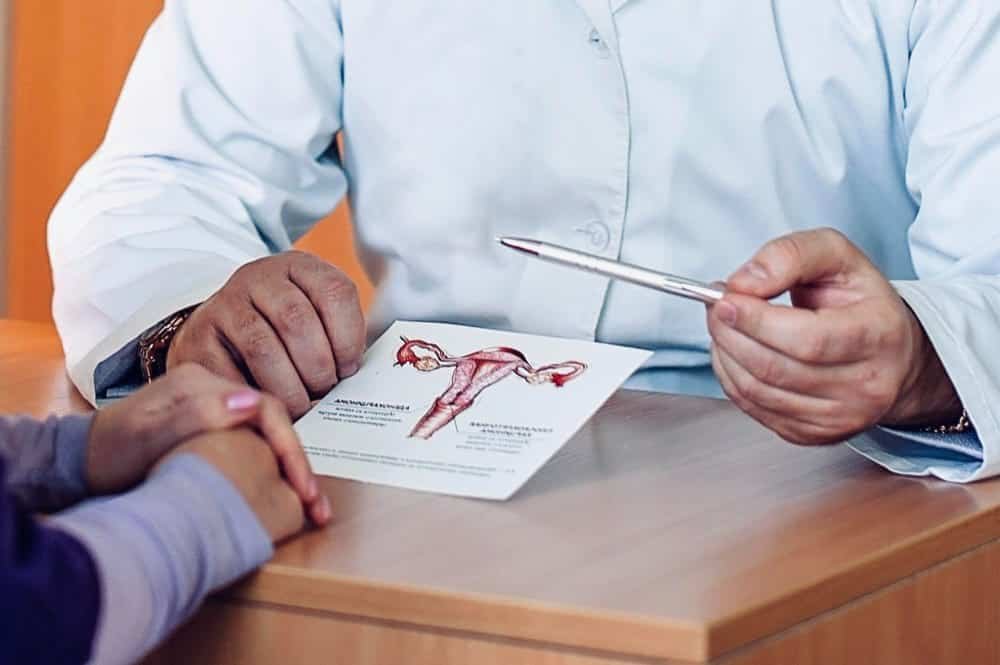Wondering about the prostate embolization technique? This advanced, minimally invasive treatment, known as prostatic artery embolization (PAE), offers significant relief from urinary symptoms caused by an enlarged prostate, without the need for traditional surgery or the associated risks.

What Is Benign Prostatic Hyperplasia (BPH) and How Does It Affect Men?
Benign Prostatic Hyperplasia, or BPH, is a non-cancerous enlargement of the prostate gland. It’s a very common condition, affecting a majority of men as they age, with studies showing it impacts 70% of men over 70. The prostate gland is located just below the bladder, and as it grows, it can squeeze or block the urethra—the tube that carries urine out of the body.
This pressure leads to Lower Urinary Tract Symptoms (LUTS), which can significantly disrupt daily life. Common urinary symptoms include:
- A frequent or urgent need to urinate.
- Increased urination at night (nocturia).
- Difficulty starting urination.
- A weak or interrupted urine stream.
- Dribbling at the end of urination.
- Inability to completely empty the bladder.
While BPH is not prostate cancer and doesn’t increase your risk for it, the symptoms it causes can severely impact a patient’s quality of life. Traditionally, treatments have ranged from medication to invasive surgical procedures. However, a revolutionary and effective alternative has been established: prostatic artery embolization (PAE).
Prostatic Artery Embolization (PAE): A Modern, Minimally Invasive Treatment
Prostatic artery embolization (PAE) is an innovative, endovascular procedure performed by a specialist known as an interventional radiologist. Instead of surgically cutting or removing tissue, PAE works by blocking the blood flow to the prostate gland.
Here’s the core concept: the enlarged prostate gland requires a rich blood supply to maintain its size. The PAE prostate embolization technique involves identifying the specific arteries that supply the prostate (the prostatic arteries) and injecting tiny, harmless microparticles into them. This blockage, or “embolization,” reduces the blood supply, causing the prostate gland to soften and shrink over time. As the prostate decreases in size, the pressure on the urethra is relieved, leading to a significant improvement in urinary symptoms.
This minimally invasive treatment has gained endorsement from multiple international medical societies as a safe and effective option for treating BPH.
Who Is a Candidate for the Prostate Artery Embolization Procedure?
PAE is a valuable option for many men suffering from BPH, but it’s not for everyone. An evaluation by an interventional radiologist like Dr. Samir Abdel Ghaffar is essential. The primary prostate artery embolization: indications include:
- Moderate to Severe LUTS: Men who experience significant urinary symptoms that haven’t responded well to medication.
- Poor Surgical Candidates: Patients who are not suitable for traditional surgery (like transurethral resection of the prostate, or TURP) due to age, heart conditions, bleeding disorders, or other health issues.
- Desire to Avoid Surgery: Men who refuse invasive surgery and its potential complications, such as sexual side effects.
- Large Prostate Gland: Patients with a significantly enlarged prostate, which can make other procedures more challenging.
- Failure of Medical Therapy: Individuals who have tried medications for BPH without achieving adequate symptom relief or who have experienced side effects from the drugs.
Before the procedure, a thorough clinical evaluation is performed, often including advanced imaging like an MRI or CT scan to assess the prostate size and its vascular anatomy. This preparation ensures the treatment is tailored to the patient’s specific needs.
The Prostate Embolization Technique: A Step-by-Step Review

The PAE procedure is highly technical and requires exceptional skill, particularly a deep understanding of the complex pelvic vascular anatomy to avoid pitfalls. The procedure is performed in an interventional radiology suite, often under local anesthesia and conscious sedation, meaning the patient is relaxed but awake.
Here is a simplified step-by-step overview of how the prostate embolization technique is performed:
Step 1: Accessing the Arterial System
The interventional radiologist makes a tiny puncture, usually in the groin (femoral artery) or wrist (radial artery), to access the body’s arterial system. This approach avoids any major cuts or incisions.
Step 2: Catheter Guidance
Using sophisticated X-ray imaging for guidance, a very thin tube called a catheter is navigated through the arteries toward the pelvic region.
Step 3: Identifying the Prostatic Arteries
This is the most demanding part of the procedure. The radiologist must carefully identify the small prostatic arteries on both the left and right sides that supply blood to the prostate. The anatomy of these arteries can vary significantly between patients, which is why expertise is crucial. Advanced imaging techniques, including three-dimensional (3D) imaging, help create a detailed map of the blood vessels.
Step 4: The PErFecTED Technique
Many advanced centers, including those led by experts like Dr. Ubenicio Silveira Dias Jr and Dr. André Moreira de Assis, utilize a refined method called the PErFecTED Technique (Proximal Embolization First, Then Embolize Distal). This involves a specific sequence of embolization to achieve maximum effectiveness.
- Proximal Embolization: The initial part of the embolization targets the larger, more central parts of the prostatic artery.
- Distal Embolization: The procedure concludes by embolizing the smaller, more distant branches. This systematic approach ensures a more complete blockage of blood flow, leading to better clinical outcomes and lower recurrence rates.
Step 5: Injecting the Microparticles
Once the catheter is perfectly positioned within a prostatic artery, microscopic spherical particles (microspheres), often made of a harmless material like tri-acryl gelatin, are injected. These particles flow into the smaller vessels within the prostate and block the blood supply.
Step 6: Repeating on the Other Side
The process is then repeated for the prostatic artery on the opposite side, typically through the same initial puncture point. Bilateral (both-sided) embolization is necessary to achieve the best results and ensure the entire gland shrinks uniformly.
Step 7: Completion and Recovery
After confirming that blood flow to the prostate is successfully blocked, the catheter is removed. A small bandage is placed over the puncture site. The entire procedure typically takes 1 to 4 hours. Patients can often go home the same day.
Benefits of PAE Compared to Traditional Surgical Interventions
For decades, the standard surgical treatment for BPH has been Transurethral Resection of the Prostate (TURP). While effective, TURP is an invasive surgery that involves cutting away prostate tissue and comes with a higher risk of complications. PAE offers several key advantages ✅.
| Feature | Prostate Artery Embolization (PAE) | Traditional Surgery (TURP) |
|---|---|---|
| Invasiveness | Minimally invasive; no cutting or tissue removal. | Invasive; involves cutting and removing prostate tissue. |
| Anesthesia | Local anesthesia and light sedation. | General or spinal anesthesia required. |
| Hospital Stay | Outpatient procedure; go home the same day. | Requires a hospital stay of 1-3 days. |
| Recovery Time | Return to normal activities within a few days. | Several weeks of recovery with activity restrictions. |
| Risk of Sexual Side Effects | Very low risk of erectile dysfunction or ejaculatory issues. | Higher risk of retrograde ejaculation (“dry orgasm”) and erectile dysfunction. |
| Blood Loss | Minimal. | Significant risk of bleeding. |
Prostate Artery Embolization Side Effects and Risks

PAE is considered a very safe procedure, especially when performed by an experienced interventional radiologist. Most side effects are mild and temporary, a condition known as “post-PAE syndrome.”
Common, short-term prostate artery embolization side effects may include:
- A dull ache or pain in the pelvic area.
- A frequent or urgent need to urinate for a few days.
- Mild burning sensation during urination.
- Low-grade fever 🤒.
- Nausea or fatigue.
These symptoms typically resolve within a week and are managed with over-the-counter pain relievers and anti-inflammatory medications.
Serious complications are rare but can include non-target embolization, where the microparticles travel to unintended areas like the bladder or rectum. However, the risk of this is minimized through meticulous technique and advanced imaging guidance. Unlike more invasive techniques, the risk of major sexual dysfunction or incontinence is exceptionally low.
What to Expect During the Post-Procedure Period
Recovery from the prostate artery embolization post procedure is much faster than with surgical options.
- First Few Days: Rest is recommended. You may experience the mild symptoms of post-PAE syndrome.
- First Week: Most patients can return to work and light activities.
- First Month: You will likely begin to notice a significant improvement in your urinary symptoms as the prostate starts to shrink.
- 3-6 Months: The full clinical benefits are typically realized within this period, as the prostate continues to decrease in size by 20-40%. Follow-up evaluation is important to monitor progress.
Studies have demonstrated that the effectiveness of PAE is durable, with patients reporting sustained improvement in symptoms and quality of life for years after the treatment.
The Importance of Anatomy and Advanced Tools in PAE Success
The technical success of the prostate embolization technique is heavily attributed to two factors: a deep knowledge of the prostate artery anatomy and the use of advanced tools. The arterial supply to the prostate is complex and highly variable, making it a demanding procedure.
Interventional radiologists use specialized tools to perform PAE safely and effectively:
- Microcatheters: These are extremely thin catheters designed to navigate the tiny and winding prostatic arteries.
- Guidewires: Flexible wires that help steer the microcatheter to the target location.
- Cone-Beam CT (CBCT): This advanced imaging technology provides real-time, 3D views of the pelvic anatomy, allowing the radiologist to precisely locate the arteries and avoid non-target embolization. CBCT has been shown to improve accuracy and reduce radiation exposure.
- Embolic Agents: The choice of microparticle size is critical. The particles must be large enough to block the target arteries but small enough to be delivered through the microcatheter. Recent studies have also explored other agents like glue, with promising one-year outcomes.
Frequently Asked Questions (FAQs) 🤔
Is the prostate embolization technique painful?
The procedure itself is not painful as it’s done under local anesthesia. Afterward, some patients experience mild to moderate pelvic pain or discomfort for a few days, which is easily managed with medication.
How long until I see results?
While some men notice improvements within the first couple of weeks, the most significant relief from urinary symptoms typically occurs between one and six months after the procedure as the prostate gradually shrinks.
Is PAE a permanent solution for BPH?
PAE provides long-lasting relief for the majority of patients. Clinical studies have shown its effectiveness for many years. However, as BPH is a progressive condition, a small percentage of men may require additional treatment in the distant future.
Will PAE affect my sexual function?
One of the most significant advantages of PAE is its excellent safety profile regarding sexual function. The risk of erectile dysfunction or ejaculatory problems is significantly lower compared to surgical treatments like TURP.
A Step Toward a Better Quality of Life
The prostate embolization technique represents a major step forward in treating benign prostatic hyperplasia. As a safe, effective, and minimally invasive treatment, PAE offers men a powerful alternative to lifelong medication or invasive surgery. It allows them to achieve lasting relief from disruptive urinary symptoms and regain their quality of life, all with a faster recovery and a much lower risk of complications. ✨
If you are struggling with symptoms of an enlarged prostate, it’s time to explore your options. Dr. Samir Abdel Ghaffar is a consultant interventional radiologist with extensive experience in performing advanced endovascular procedures like prostatic artery embolization. A consultation will provide a comprehensive evaluation and help determine if this innovative treatment is the right choice for you. Take the first step toward improving your health today. 🩺
 العربية
العربية 
